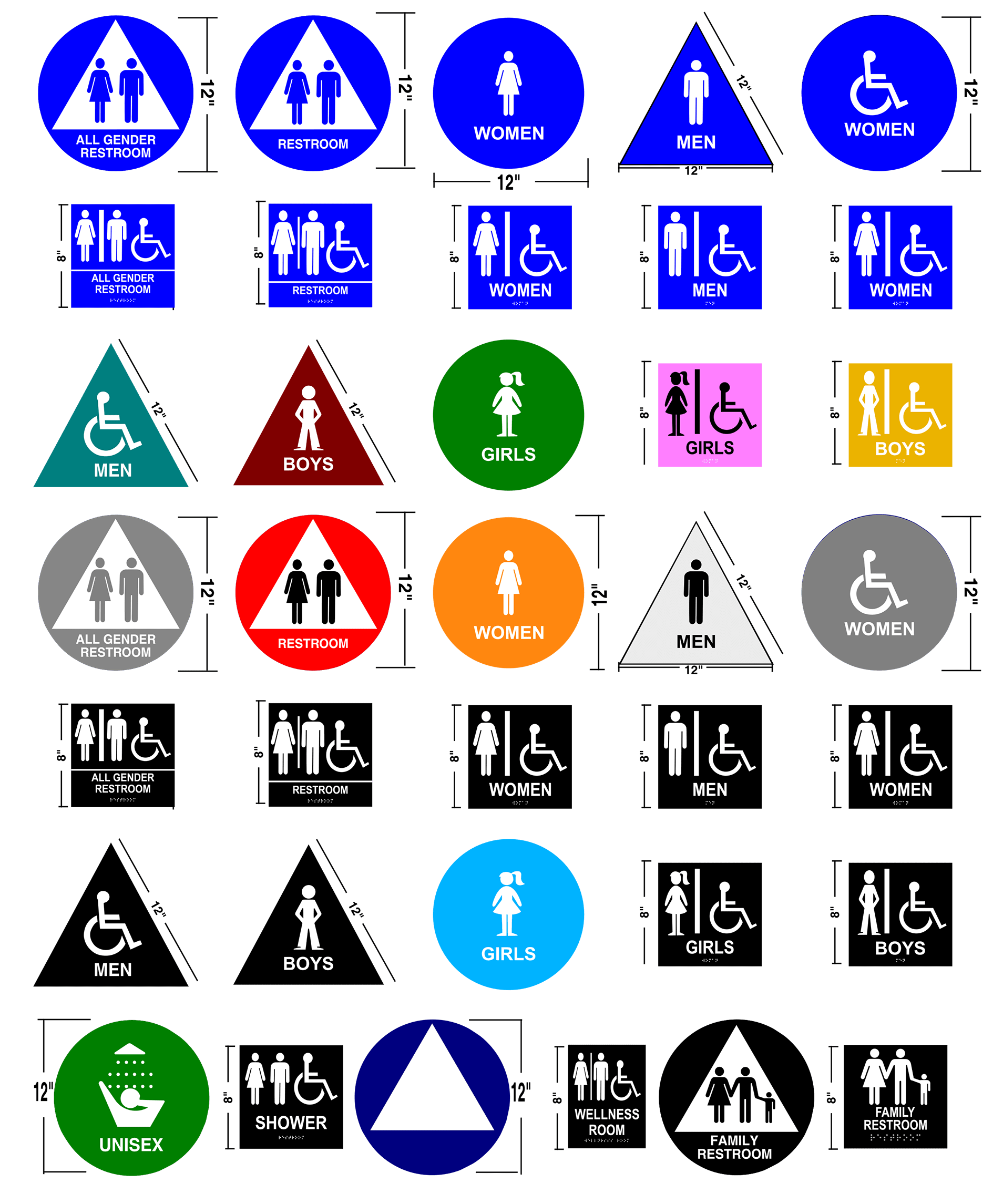ADA Signs: Making Certain Accessibility and Conformity in Public Spaces
ADA signs plays an essential role in guaranteeing availability and compliance within public spaces, significantly contributing to a comprehensive environment for people with handicaps. By sticking to ADA standards, signs not just facilitates navigating yet likewise highlights a company's devotion to diversity and equal rights. As we discover the nuances of ADA signs, from responsive functions to make intricacies, it's important to take into consideration exactly how these elements coalesce to maintain the rights of all individuals. What are the common mistakes companies deal with in keeping compliance, and exactly how can future fads in signs remain to drive ease of access ahead?
Significance of ADA Signs
In modern-day culture, the relevance of ADA signs prolongs beyond mere compliance with lawful requireds to embody a dedication to inclusivity and ease of access for all people. These indications are important in developing atmospheres where individuals with impairments can browse public areas with the exact same simplicity and independence as those without impairments. By offering clear and standard info, ADA signs makes sure that every person can access facilities, services, and info without barriers.
The importance of ADA signs depends on its capability to boost the quality of life for individuals with impairments by advertising equivalent accessibility. It eliminates the barriers that may or else prevent their ability to take part fully in area life. Moreover, these indicators function as visible indicators of an organization's commitment to variety and equal rights, showing wider societal worths that promote the civil liberties and self-respect of all individuals.
Furthermore, ADA signage plays an important duty in public safety and security. By assisting individuals to departures, restrooms, and various other essential facilities, it makes certain that all people, no matter physical capability, can evacuate safely during emergency situations. In summary, ADA signs is not simply a governing need yet a powerful tool for fostering a equitable and comprehensive culture.
Crucial Element of Compliance

Placement is important; signs should be set up in areas that are easily noticeable and reachable. Usually, signs must be placed between 48 and 60 inches from the ground to guarantee accessibility for both standing and mobility device individuals. Tactile elements, such as Braille, are important for individuals with aesthetic impairments, giving critical details in a non-visual format.
High-contrast shades in between the message and background are essential to improve readability for individuals with low vision. The ADA mandates specific comparison ratios to ensure clearness. In addition, character dimension is an essential consideration, with minimum elevation needs dictated by the watching range to guarantee readability from different angles.
Design Factors To Consider for Availability
Designing available signage requires a thorough technique to ensure it satisfies the demands of all users, specifically those with impairments. This entails considering numerous design components that boost readability and use. Trick aspects consist of the choice of font style, shade contrast, and tactile features. Typefaces should be sans-serif, with clear and straightforward letterforms, to assist in simple reading. The size of the text is equally critical, with ADA guidelines suggesting a minimum elevation based on checking out range to make certain legibility.
Contrasting colors between message and background are crucial for exposure, particularly for individuals with aesthetic problems. In addition, responsive elements, such as Braille and increased personalities, are essential for individuals that are blind or have low vision.
Additionally, the placement of signs plays a significant role in ease of access. Indicators ought to be set up in places that are quickly obtainable and unhampered. Making sure that signage is mounted at ideal heights and angles enables all customers, consisting of those using mobility devices, to interact with them properly.
Usual Blunders to Prevent

One more widespread mistake is the wrong placement of signage. ADA guidelines specify precise height and location demands to ensure that indicators are reachable and quickly noticeable by all individuals, including those using wheelchairs. Ignoring these standards not just interferes with accessibility however additionally takes the chance of non-compliance with lawful requirements.
Furthermore, inadequate contrast between message and history is a regular oversight. Appropriate contrast is essential for readability, specifically for people with reduced vision. Designers often pick colors that are aesthetically attractive however do not have the required comparison, providing the message difficult to discern.
Finally, some designers fail to integrate tactile elements, such as Braille, which are critical for people that are blind. Leaving out these features not only leads to non-compliance with ADA laws but also restricts access for a section of the populace that relies upon responsive info.
Future Trends in Signs
Innovations in modern technology and increasing awareness of inclusivity are shaping the future fads in signage style. Digital signage, for instance, is progressing to consist of interactive attributes and real-time updates, which can be essential in offering dynamic information in public rooms.
An additional arising trend is the use of enhanced fact (AR) to improve customer experience. AR-enabled signs can overlay electronic info onto the physical environment, giving visually impaired people with auditory or haptic feedback. ADA Signs. This modern technology not just boosts ease of access yet additionally creates an appealing experience for all users
Sustainability Related Site is also a substantial aspect affecting signs fads. Green products and energy-efficient lights remedies are being focused on to line up with international ecological goals. Advancements in products science are leading to the development of more resilient and weather-resistant signs.
Conclusion
ADA signage plays an important role in assuring ease of access and conformity within public rooms by including responsive components, high-contrast colors, and tactical positioning. The adherence to ADA criteria not just promotes risk-free navigation for people with impairments yet likewise symbolizes a company's commitment to diversity and inclusivity. By preventing common blunders and accepting future patterns, public rooms can continue to progress these worths, making certain that the legal rights and self-respect of all individuals are respected and promoted.
ADA signs plays an essential role in assuring availability and compliance within public spaces, dramatically contributing to a comprehensive environment for individuals with impairments. As we discover the subtleties of ADA signs, from tactile functions to create details, it's critical to consider just how these components coalesce to copyright the legal rights of all users.In contemporary society, the relevance of ADA signage expands beyond plain compliance with lawful requireds to personify a commitment to inclusivity and access for all people. By providing standard and clear info, ADA signs makes sure that every person can access facilities, services, and information without barriers.
ADA signage plays a crucial function in ensuring access and compliance within public spaces by incorporating responsive components, high-contrast colors, and click now tactical placement. (ADA great post to read Signs)